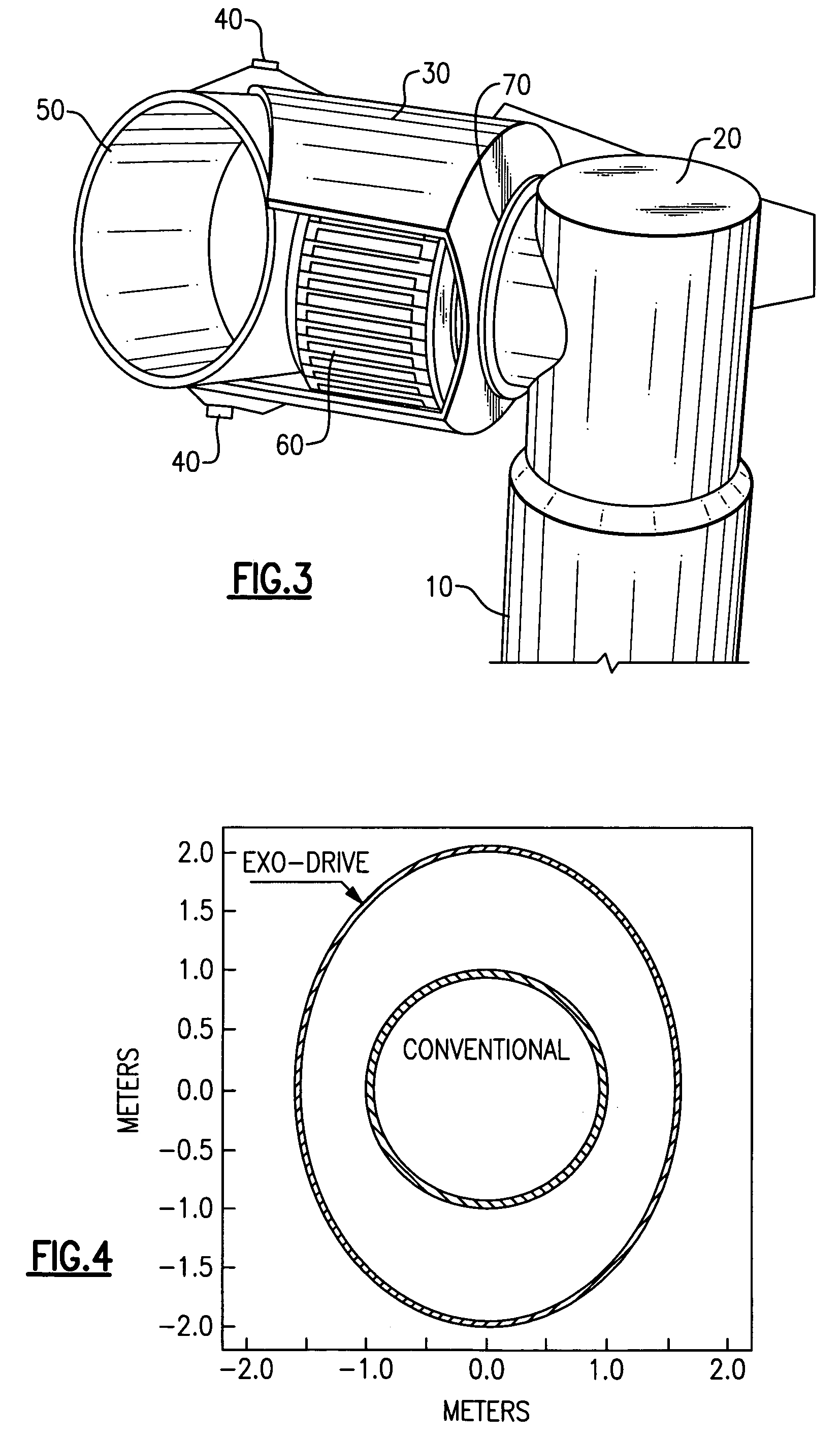Wind-turbine with load-carrying skin
a wind turbine and load-carrying technology, applied in the direction of machines/engines, mechanical equipment, electric generator control, etc., can solve the problems of limiting the length of the blade, limiting the blade-root diameter, and reducing the service life of the blade, so as to reduce the overall cost, reduce the use of materials, and reduce the effect of structural displacemen
- Summary
- Abstract
- Description
- Claims
- Application Information
AI Technical Summary
Benefits of technology
Problems solved by technology
Method used
Image
Examples
Embodiment Construction
[0030]In reference to FIG. 1, a wind-turbine is composed of three main structural systems including a tower 10, a rotor 12, and a nacelle 18 that is rotationally attached to the tower 10 for rotation about a tower axis (yaw axis). Aerodynamic power generated by the rotor 12 is controlled by changing a yaw-angle of the nacelle 18. Consequently, the rotor 12 must be connected with the nacelle 18 through spaced-apart teeter hinges 40 to prevent large gyroscopic forces produced during yawing from damaging wind-turbine structures. The teetering motion allows the gyroscopic forces to be balanced by blade acceleration and aerodynamic damping forces.
[0031]The nacelle 18 holds a central component of an exo-drive system, namely a hollow shaft 30 (FIGS. 2-3) of a large-diameter, which is rotationally attached to an aft nacelle structure 20 via at least one bearing for rotational motion about an axis that is essentially horizontal. The axis is generally within a range of plus or minus 10 degree...
PUM
 Login to View More
Login to View More Abstract
Description
Claims
Application Information
 Login to View More
Login to View More - R&D
- Intellectual Property
- Life Sciences
- Materials
- Tech Scout
- Unparalleled Data Quality
- Higher Quality Content
- 60% Fewer Hallucinations
Browse by: Latest US Patents, China's latest patents, Technical Efficacy Thesaurus, Application Domain, Technology Topic, Popular Technical Reports.
© 2025 PatSnap. All rights reserved.Legal|Privacy policy|Modern Slavery Act Transparency Statement|Sitemap|About US| Contact US: help@patsnap.com



